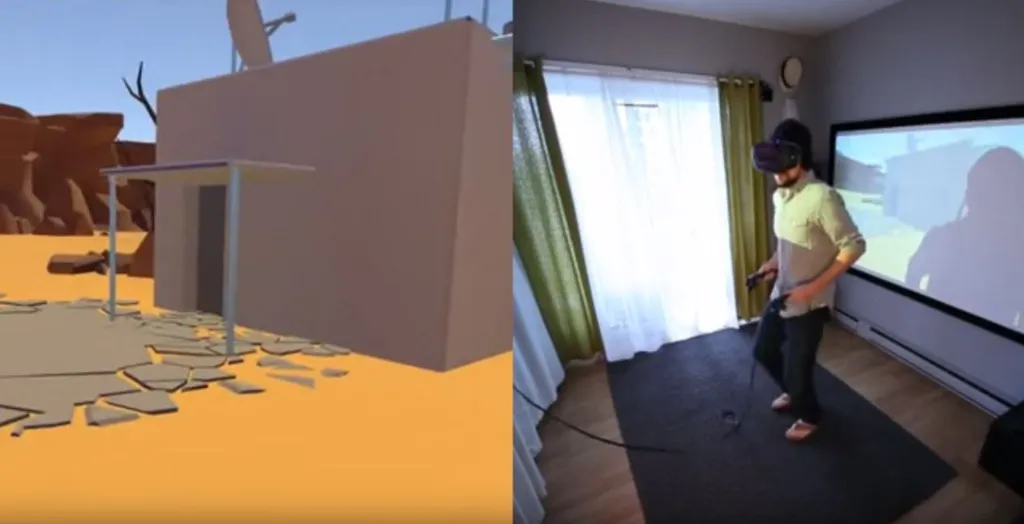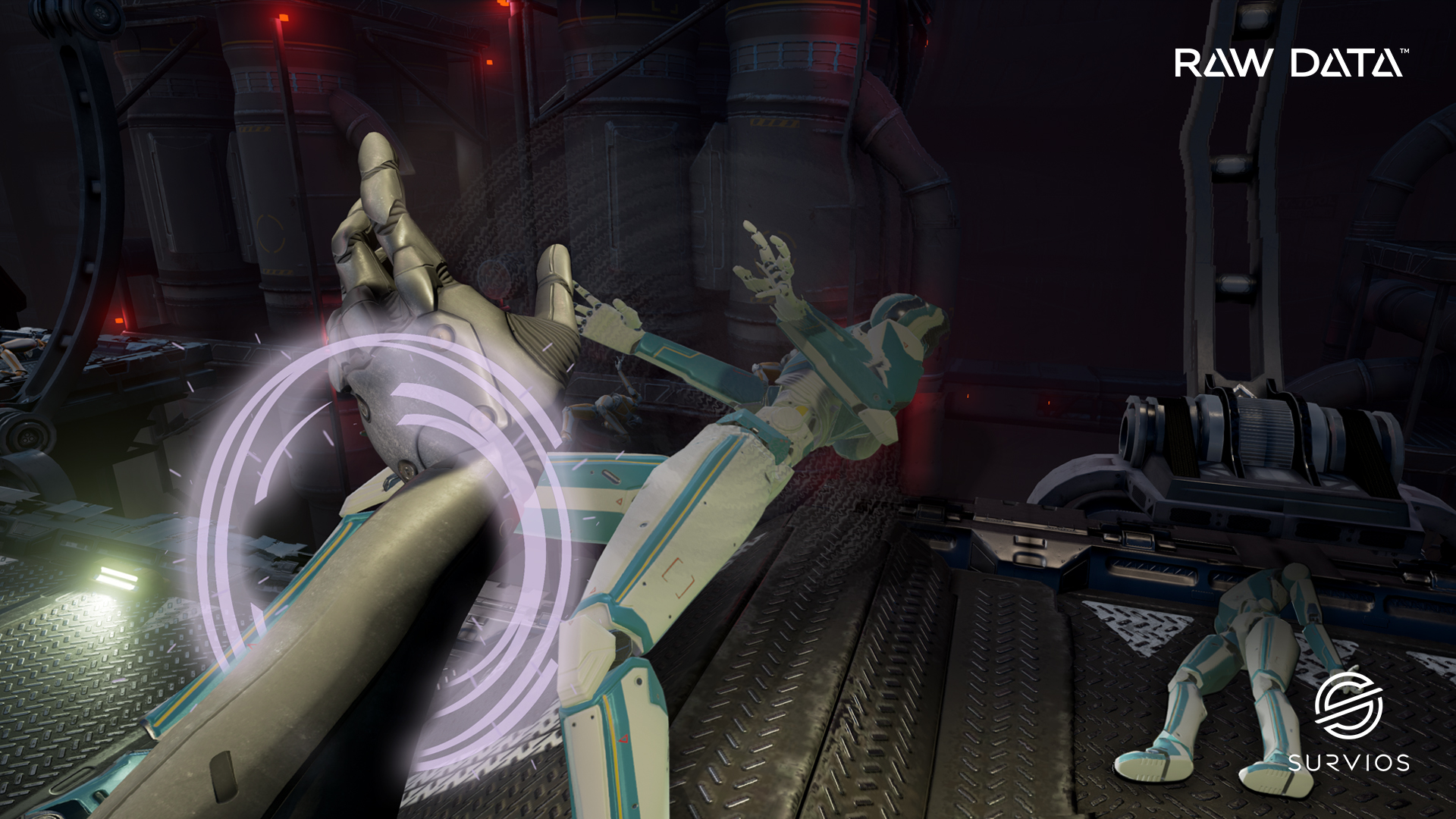The VR movement, or locomotion, debate in the development community is raging at full-power these days.
For those unaware, VR sickness can be a big problem. When your eyes and mind perceive movement (as in you move inside of a VR game) but your physical body doesn’t experience the sensations of that movement (as in you don’t feel the momentum) that contradiction can make you feel sick. It’s similar to motion sickness people get in cars and on boats.
While many people don’t suffer from it at all, it’s still a major roadblock preventing many people from enjoying a lot of the best VR experiences. In fact, it was a major issue with Resident Evil VII at this year’s E3. As it stands currently, we don’t have a definitive solution for what works the majority of the time.
On the one hand, you’ve got oodles of teleportation-based games, such as The Gallery, Battle Dome, Rec Room, and dozens of others. For all intents and purposes, pointing at the ground, clicking a button, and teleporting is slowly becoming the de facto option for many VR game developers.
And within that mechanic are several sub-mechanics such as blinking, which blacks the screen in and out quickly, or a sprint blur, similar to Raw Data or Island 359. On the other hand some developers are relying on the tried and true regular movement we’ve seen in games for decades, whether that be via analog stick, WASD, or something else. At the far end of the immersion spectrum, some companies such as Virtuix have even created devices like the Omni that allow you to physically walk and run inside virtual environments. But those are expensive and take up a ton of room, lessening their value in a traditional home environment.
Now recently, some indie VR developers have taken to the usage of a running in place-style movement system to dance around some of the long-standing locomotion issues. One of the first implementations of this was from YouTuber deprecatedcoder, in which he dubbed the movement system “RIPmotion.” In his first video, you were required to stash one of the Vive controllers on your belt so that it could track the location of your waist and move your character accordingly.
In the above video, you can see an updated version of this movement system that actually allows you to hold your hands at your waist while running in place to trigger character movement. The biggest issue with this version is that it doesn’t allow you to have a free hand for interacting or performing actions in the game. RIPmotion is available to download at the link in the description of his video.
Inspired by the RIPmotion mechanic, another indie developer named David Tai, actually implemented something very similar in his RagnarokVR concept. In the video, you can see how not only a Sword Art Online-style RPG might look inside of a VR headset, but also how versatile the various VR movement systems really are in practice.
A few weeks ago, Reddit user Highsight showed off a very similar movement system that’s referred to as a “natural feeling movement system” or “Immersive Movement.” In the video, he built a blocky room for users to run around in and try everything out, which is also available for download. This time around, the tracking is still based off of your movement as you run in place, but doesn’t require you to hold the controllers at your waist or attach one to your body. Instead, you hold a button and move your arms as you would if you were actually running.
As you can see in the video above, this system also still allows you to use objects and interact with one of your hands if you prefer. Finally and most recently, Reddit user joiemoie showcased a similar movement system in his SAO-style Unity game. Instead of showing the demo with guns, he instead opts for a character utilizing sword slashes.
Similar to the combat in Raw Data, his game doesn’t register waggles or light poking, as the engine is designed to track actual speed and power of sword swipes. Theoretically, this is similar to the system that’s in place to track your body and hand motions to translate into movement within the virtual world. You can see his implementation in action below:
https://www.youtube.com/watch?v=wSpA0R8Yky4
The fact that unique solutions for VR movement are still being developed is a great sign to not only the variety on display in the VR community, but also to the urge for innovation. Rather than simply sitting by while teleportation takes over as the preferred method of VR movement, these developers are trying to offer new and inventive ways to move around virtual environments.
There are still a lot issues with this form of movement, however. What you gain in immersion and lack of motion sickness, you lose in accessibility and freedom of interaction. How will something like this translate to a large, multi-hour, full game? Roomscale VR is already tiring and burns a lot of calories, a VR movement system like this could take things over the edge and make it a full-blown workout just to play some VR games.
And worth noting, is that the recently released VR game, The Path of Greatest Resistance, utilizes a similar movement system, if you’re interested in seeing how it works in a released, albeit small, game.
What do you think about running in place movement vs. other options? Which VR movement system is your favorite that you’ve seen so far?
UPDATE: After this story published, someone let me know about ArmSwinger, an Open Source VR locomotion system for Unity and Vive developers created by Electric Night Owl. Instead of running in place, you just swing your arms instead.



























